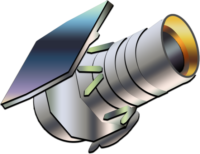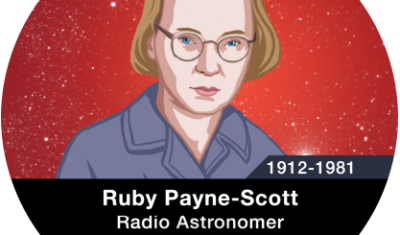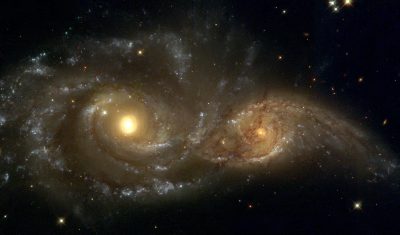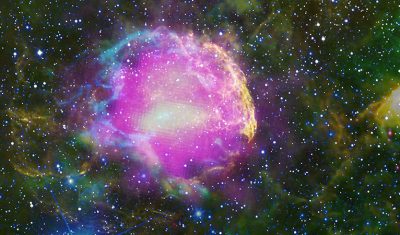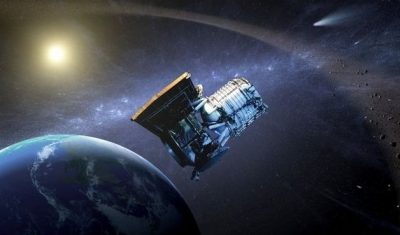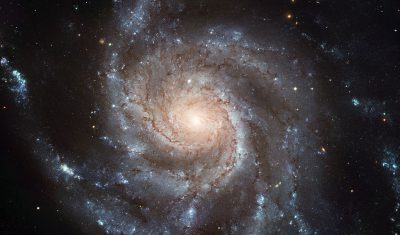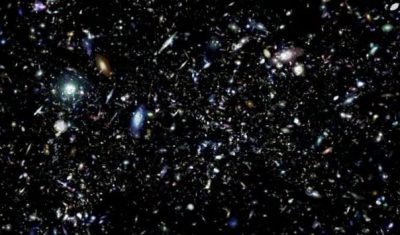Introduction
Most of the time astronomers observe the universe using telescopes on Earth. These work really well, but there’s a big problem with ground-based telescopes – they have to look through the Earth’s atmosphere to observe the Universe.
Light is electromagnetic radiation (EMR), and it comes in many different wavelengths beyond the light range that our eyes can see. You can read more about the EMR spectrum here.
|
At some wavelengths, light can’t pass through the atmosphere at all. This can be great for us, because some wavelengths are harmful. UV radiation from the sun causes skin cancer if we don’t cover up and wear sunscreen. Unlike some wavelengths of UV radiation, X-rays and gamma rays are blocked by our atmosphere. These dangerous rays can cause other types of cancer. Unfortunately, this is bad for astronomy! Astronomical objects can shine in all different wavelengths, and if we can’t observe them all we’re missing out on important information. Another problem is that the light that passes through the atmosphere gets refracted, or bent a little bit in all different directions. Bent light makes a star look like it’s in a slightly different place in the sky. Since the air is always moving, the star seems to dance around, which we see as twinkling. Light pollution also gets in the way of doing ground-based astronomy. This is the glow you see in the sky at night around a big city, which blocks out the stars and any faint objects. Space telescopes can solve these problems by getting out above the atmosphere and into outer space. But they have lots of OTHER problems! They’re expensive to launch into space, and once they’re up there they can’t be fixed if they have any problems. (The Hubble Space Telescope was one exception. It was serviced by NASA’s space shuttle program). |
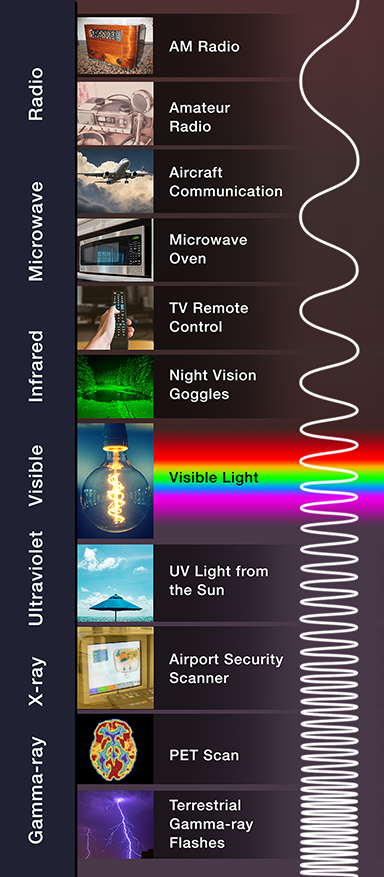 |
It’s extremely important for space telescopes to work really well when they’re launched, and to be able to communicate with the engineers and astronomers back on Earth. Commands have to be beamed up to a telescope from Earth, and data has to be sent back down again – both the science data that the telescope collects and information about how well it’s functioning. Otherwise the telescope’s mission can’t be successful.
AstroQuest’s space telescopes
The data used in AstroQuest has been collected by two ground based telescopes (VST and VISTA) and the following three space telescopes:
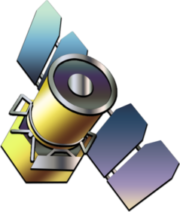 |
GALEX – This was a space telescope operating in the ultraviolet part of the electromagnetic spectrum. It was launched in 2003 and operated until 2013. Survey data recorded by GALEX tells us about young stars in the galaxies we inspect on AstroQuest |
|
|
WISE – This telescope was launched in 2009 and then decommissioned in 2011. It was then reactivated to search for near earth objects in 2013. It observes in the middle of the infrared part of the spectrum, and its survey data tells us about the amount of hot dust in the galaxies on AstroQuest |
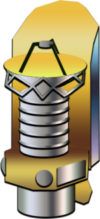 |
Herschel – This telescope was launched in 2009 and operated until 2013. It observed in the far infrared and submillimetre bands of the electromagnetic spectrum. Its images tell us about the amount of cold dust in the AstroQuest galaxies |
Communicating with Earth
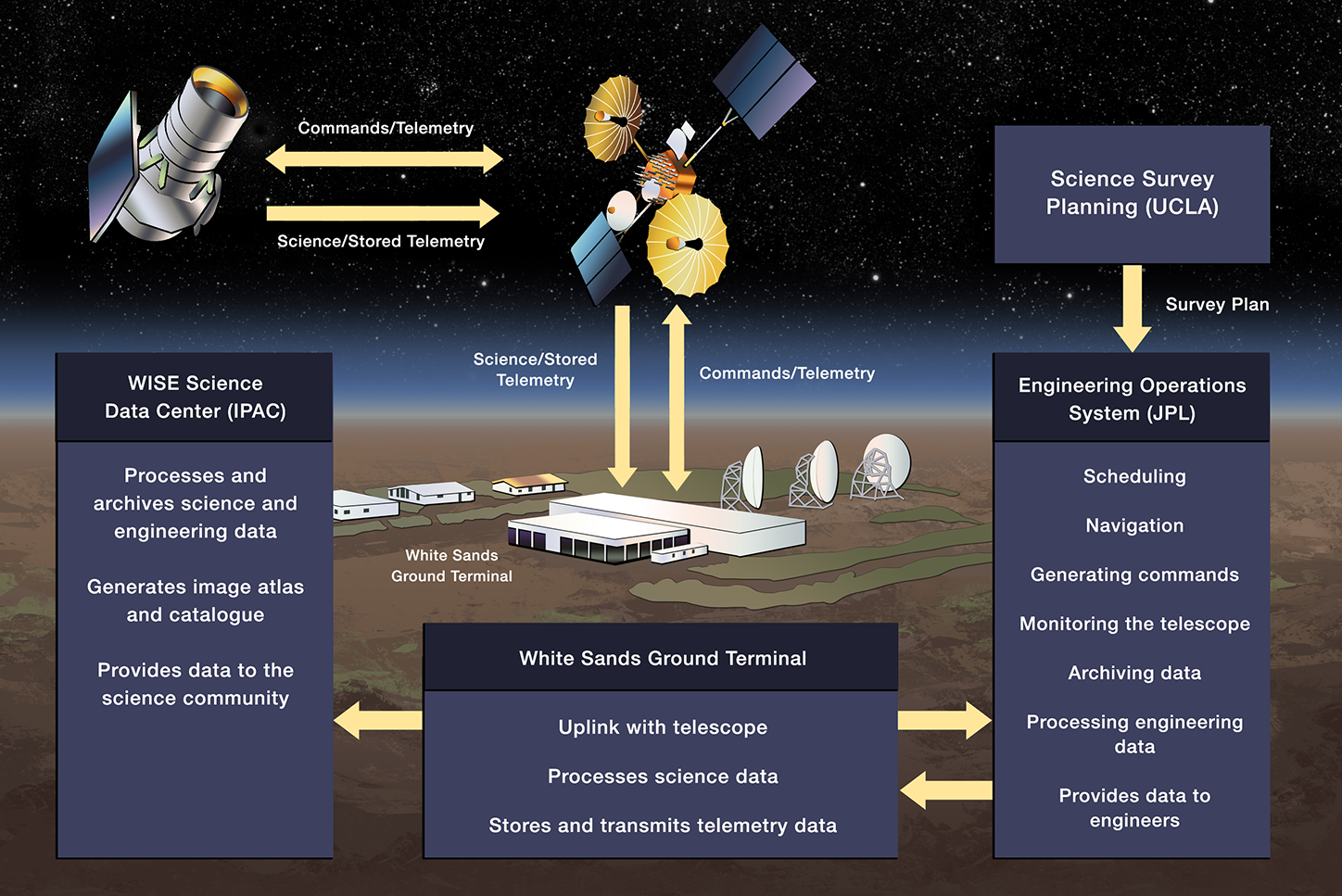
The crew on the ground upload commands to the spacecraft wirelessly to tell it which way to point, what maintenance tasks to perform, and other commands. This is often done using microwaves in a similar range of frequencies to some home WiFi networks.
The telescope downloads telemetry and scientific data back to Earth wirelessly as well. This often uses much higher frequency microwaves than the uplink, which transfer a lot more data more quickly than your WiFi at home!
Telemetry is any data sent from a remote device about how it’s functioning and what it’s doing. This information enables the scientists and engineers to operate the telescope. Controlling the telescope is very important, but if it doesn’t send back astronomy data to Earth it is useless.
Sometimes both the upload and download signals don’t pass directly between the telescope and the Earth, but instead are sent via a satellite (as you can see in the diagram about WISE above). Other times it communicates with a tracking station on Earth, like the one at New Norcia near Perth. The signal can only be received from the telescope if it has a direct line of sight with the satellite or dish that it needs to talk to. You can find out more about the tracking station at New Norcia here.
AstroQuest data journey: from space to your place
Here we trace the journey telescope data goes on, from an object in space all the way to the AstroQuest website, and then to your computer at home.
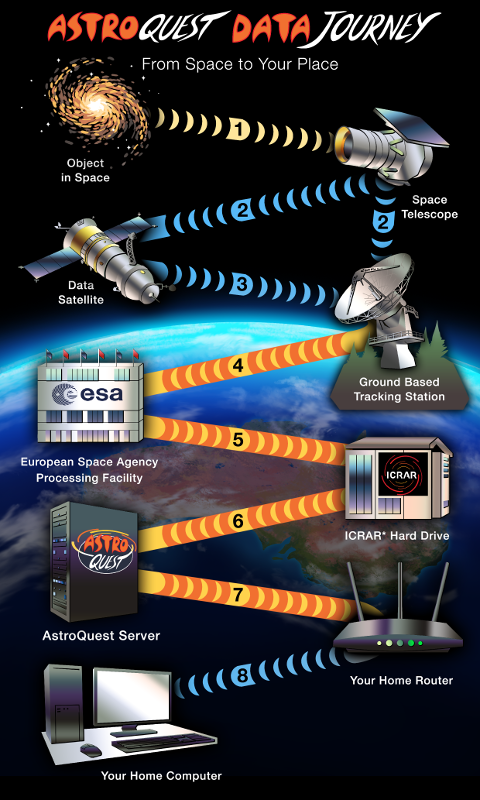
All the steps taken by data collected by a space telescope to get to your computer at home.
- The light from the object in space is received by a CCD camera inside a space telescope in orbit around Earth. Data from the light emitted by the object in space is stored in the space telescope as binary code.
- The space telescope transmits the astronomy data wirelessly to a satellite. (note: Sometimes this step can be skipped, and the space telescope will transmit the astronomy data directly to a ground-based tracking station).
- The satellite transmits the astronomy data wirelessly to a ground-based tracking station.
- The ground-based tracking station transmits the astronomy data to a processing facility via the internet (this can be at the ESA or another space agency). This journey will use a vast network of subterranean and submarine internet cables. The processing facility converts the binary code into useable data for the astronomers.
- After the data has been processed for the astronomers, it is sent from the processing facility, across the internet, to be worked on by the astronomers at ICRAR.
- The galaxy data is uploaded by the staff at ICRAR to the AstroQuest website server, ready to be seen by citizen scientists.
- You access the AstroQuest website and your home router downloads the website data.
- The website data is sent wirelessly from your home router to your computer, where it is displayed on your screen.
The journey is complete! From light years away to right in front of you, this is how light from a distant galaxy is processed to be used in AstroQuest.
Digital images
Space telescopes work similarly to a digital camera. They have an array of sensors called a CCD (Charge Coupled Device), onto which light is directed by the telescope’s mirrors.
When photons of light are received by a sensor, they are converted into electrons by the “photoelectric effect” in a layer of silicon. The charge from these electrons builds up inside each sensor like water in a bucket.
At the end of an exposure, the amount of charge in each pixel of the image is counted and converted into binary numbers, represented by a series of 1s and 0s. The binary numbers are encoded into the signal beamed down by the telescope to Earth, where they are decoded back into digital images. Over its journey, the signal picks up noise and other types of interference. This is removed where possible by the ground crew to improve the quality of the image.
You can read more about digital images here.
More information
The part of a spacecraft that handles communications is known as the Telemetry, Tracking and Command (TT&C) subsystem. If you search for this term, you will find more technical information about how telescopes communicate with Earth.


